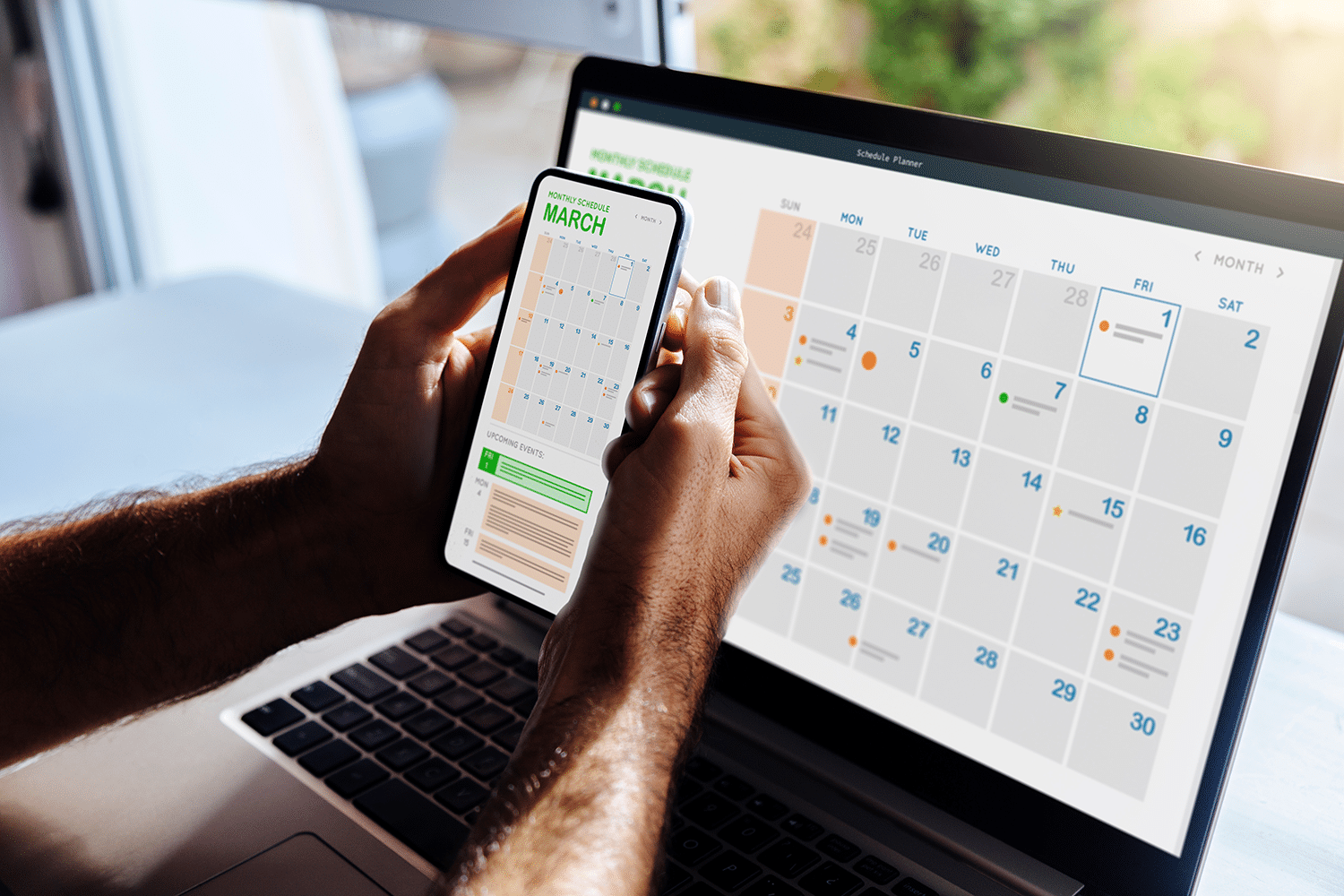
How to Personalize Your Text Marketing with SMS Segmentation
Are you still sending the same SMS messages to customers on your contact list? If so, you might not make the most of your marketing efforts. Nowadays, where personalization is key, treating all your customers alike could mean missing out on engagement and sales.
You may wonder: what’s more effective—a generic message or relevant mass texts that reach customers right when considering a purchase? That’s the real benefit of SMS segmentation. It allows you to send text messages to loyal customers promptly and highly relevant.
In this article, we will explore how effective SMS segmentation can turn every message into an opportunity to improve customer relationships and drive meaningful engagement.

Get Started With Business Texting
View our pricing, and start your free trial with Textellent today!
How Does SMS Segmentation Work?
SMS segmentation divides your customer base into smaller, more targeted groups based on specific criteria. It allows you to send personalized messages to your customers, which leads to higher engagement rates, improved customer satisfaction, and increased sales.
How Can Businesses Segment Their SMS Lists?
Segmenting your SMS list allows you to send personalized and relevant messages to different groups within your audience. Here’s how you can effectively segment SMS lists:
Step 1: Collect Data
Start by gathering data about your customers from various sources. For example, when customers sign up for your SMS list, collect information like their name, age, location, and interests.
Track their purchase history to see what products and how often they buy them. Use tools like Google Analytics to understand their browsing behavior on your website. Also, gather data from your mobile app to see which features they use most.
Step 2: Create SMS Segments
With the necessary data collected, segments can be created by grouping customers with similar characteristics. You can segment your audience by:
- Demographics (age, gender, income)
- Geography (location such as city or state)
- Behavior (purchase history and browsing habits)
- Psychographics (lifestyle, interests, values)
- Technographics (type of devices used)
For example, you might group customers by age, creating segments for young adults, middle-aged adults, and seniors. Alternatively, you might segment by location, grouping customers from different cities or regions.
Step 3: Send Targeted Messages
Once you have your segments, create and send targeted messages to each group. Tailor your messages to match the specific interests and needs of each segment. Use the data you’ve collected to create messages that feel personal. Address the customer by name and refer to their recent purchases.
You can also offer promotions and discounts that are relevant to each segment. For example, send a discount on baby products to new parents and a special offer on fitness gear to gym enthusiasts. Analyze data to find the best times to send messages when your segments will most likely engage.
Step 4: Measure and Optimize
After sending your segmented messages, measure their performance and adjust as needed. Monitor key SMS metrics like open and opt-out rates, click-through rates, and conversion rates to see how each segment responds.
You may also experiment with different messages, send times, and offer to identify the most effective strategies. Use the insights from your metrics and tests to continuously refine your segments. Update your segmentation criteria based on customer behavior and feedback.
Benefits of SMS Segmentation
SMS customer segmentation offers numerous advantages that can improve your marketing efforts. Dividing your audience into targeted groups can help with the effectiveness of your messages and achieve better results.
Higher Engagement
Customers are more likely to read and respond when you send personalized messages. Instead of generic messages, you offer content that speaks directly to their interests and needs. This relevance increases the chances that your audience will engage with your message.
Improved Customer Experience
Customers appreciate receiving messages that matter to them. Segmenting your audience ensures that each group gets relevant offers and information. This shows customers that you understand and value their preferences.
Increased Sales
Targeted messages are more likely to convert. When you tailor your offers to specific segments, you tap into what each group is most interested in buying.
For example, recommending products based on past purchases can lead to repeat sales. Promoting relevant items to specific demographics can also drive more conversions.
Better Customer Insights
Segmenting your audience allows you to gain deeper insights into customers’ behavior and preferences. Analyzing the performance of different segments will help identify patterns and trends.
This information helps you refine your marketing strategies and create more effective SMS and MMS marketing campaigns in the future.
Unengaged Subscribers
Customers receiving relevant SMS and MMS messages are less likely to opt out of your list. Irrelevant or too frequent messages can annoy customers and lead them to unsubscribe.
Send content that resonates with each SMS segment to maintain their interest and reduce the likelihood of losing SMS subscribers.
Efficient Marketing Spend
SMS segmentation lets you focus your marketing efforts on the most promising segments. Instead of spreading your resources thin across a broad audience, you concentrate on groups more likely to respond.
It leads to a better return on investment (ROI) as you maximize the impact of your marketing spend.
5 SMS Segmentation Strategies
Effective SMS segmentation ensures that your SMS messaging reaches the right audience segments with content that resonates personally and timely. Here are five top strategies to optimize your SMS segmentation efforts for better results.
Personalizing Messages
Tailoring messages to individual preferences impact their effectiveness. Use customer names and reference their recent interactions or purchases to make each text message feel personal and relevant.
For example, greet customers by name and suggest products based on their last purchase to improve their perception of your brand. Consider using the local manager’s name in the message as well to make it feel like the message was sent personally on behalf of that manager.
Timing and Frequency
Choosing the right moment and frequency for sending SMS can significantly affect how they are received. Analyze customer data to determine optimal times for engagement. Bombarding them with too many messages can lead to disengagement.
Therefore, strike the right balance to keep your audience interested and responsive.
Dynamic Segmentation
Dynamic segmentation adapts to changes in customer behavior in real-time to ensure your marketing efforts remain relevant.
Automate shifting customers between segments based on their latest interactions, purchases, or engagement levels.
Predictive Segmentation
Use AI and machine learning technologies to forecast future behaviors based on past data. This allows you to tailor messages based on predicted needs or interests.
For example, you can send promotional offers when a customer is most likely to make a purchase, thereby increasing the likelihood of conversion.
Multichannel Integration
Integrating the SMS campaigns with other marketing channels ensures a unified customer experience across platforms.
For example, complement an email marketing campaign with SMS reminders or confirmations to reinforce messages and increase the chances of engagement.
Turn Prospects into Customers with Textellent’s Precise Targeting
Step up your SMS marketing game with Textellent’s cutting-edge segmentation tools!
With our flexible and multiple tags, you can easily pinpoint your contact targeting. Easily segment, send texts, and define your campaigns based on specific events, keywords, or necessary follow-ups.
Ready to transform your communication strategy with targeted precision? Sign up for a free trial or request a demo consultation today.
FAQs About SMS Segmentation
What’s the difference between SMS segmentation and personalization?
SMS segmentation involves dividing your audience into groups based on shared characteristics. Meanwhile, personalization refers to tailoring the content of your messages to the individual based on their specific data or behavior.
What are the benefits of offering “Text-only” offers through an SMS marketing program?
Offering text-only offers can increase customer engagement and retention by providing exclusive benefits unavailable to the general public. It can also drive higher sales volumes when the product or service is officially launched.
What steps should be taken if a customer no longer wishes to receive SMS messages?
Customers should be able to easily opt-out of receiving SMS messages by texting a simple command like ‘STOP’ or following a link provided in the SMS to unsubscribe. The text messaging service will automatically block them from getting future texts. Always ensure this process is straightforward and respected promptly.





